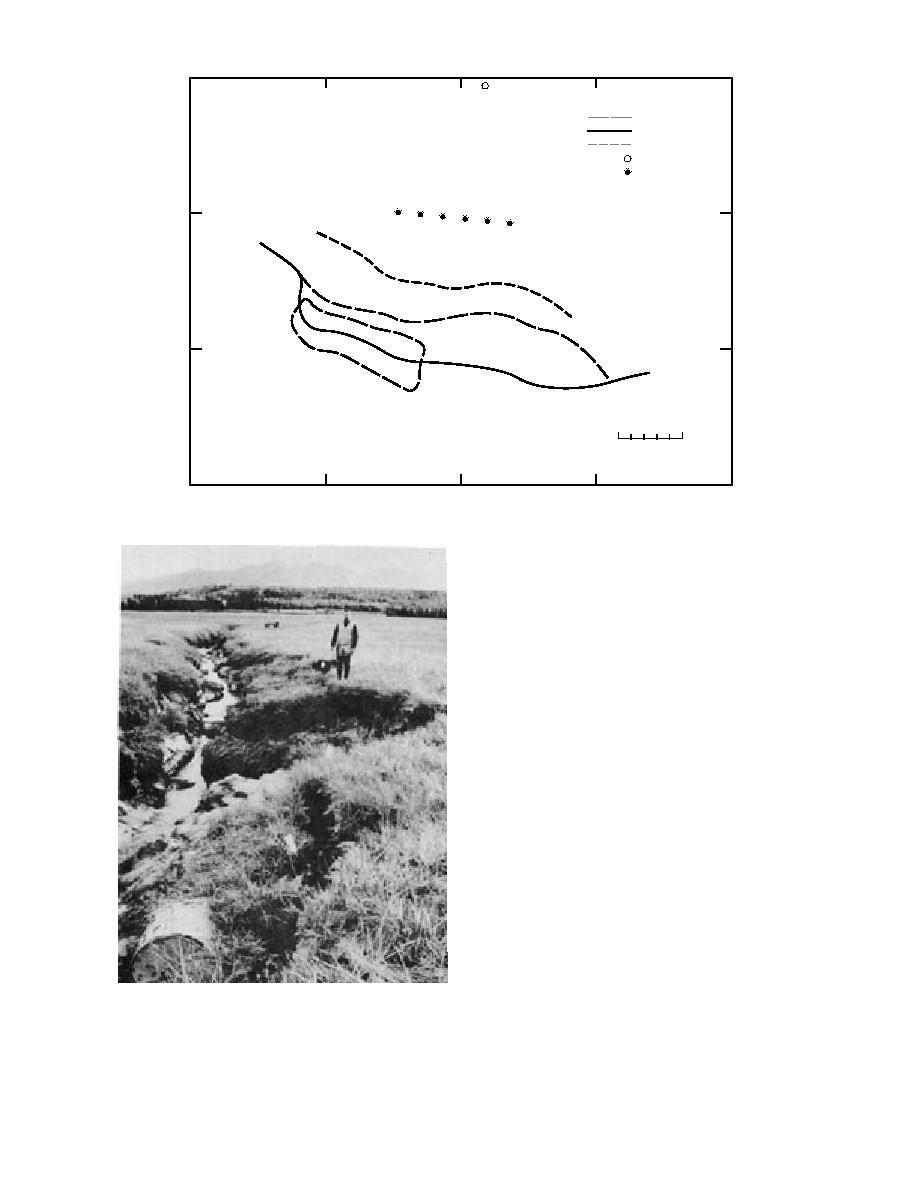
400
22 Jul 1994
14 Sep 1994
12 Nov 1994
Hub Stake
Line Stake
406
401
0
5m
Figure 51. River bank erosion at the River Section-North.
Recession rates vary because erosion takes
place as rapid, short-duration events (Tables 1
and 2). Recession is mostly caused by current
scour of the lower, unvegetated portion of gully
walls during ebb tide when water velocities are
high. Because the uppermost 2030 cm of mate-
rial is consolidated and rootbound, this soil and
root mat fail only after an erosional niche of
approximately 0.5 m or deeper is cut below it.
Along steep scarps, blocks of consolidated, root
bound sediments fall and roll into the gully bot-
toms, remaining intact until currents eventually
break them down either by rolling them along
the bed or by scour (Fig. 53). The lateral walls of
gullies, which tend to develop low-angle slopes
as headwalls, progressively recede inland, fail-
ing mainly by rotational slumping, but also by
debris flow; both processes introduce sediment
into the gully channel. On gentler slopes, blocks
of rootbound material can remain intact as they
are transported by these mudflows. This se-
quence of events happens at different times and
rates, and therefore recession varies within as
well as among the study sites (Table 14).
If our measurements of the average recession
Figure 52. Eastward view of eroded cuspate embayment
rates are representative of longer-term trends,
at monitored section of B-Gully where white phospho-
then erosion may be expected to extend gullies
rus was recorded in transport.
into ponds over the next 1550 years (Table 15).
42



 Previous Page
Previous Page
